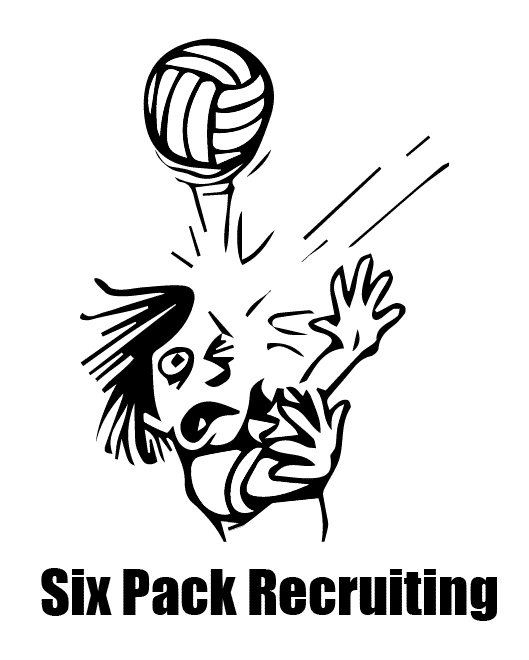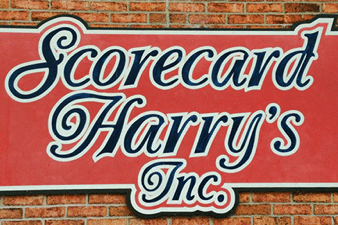| All of my strongest friendships have started on a volleyball court. After going away to University, I was nervous about coming back to Niagara, and needing to make new friends; as most of my old friends had moved away, and my university friends all lived in the USA. Not long after returning to Niagara I was contacted by Kerby from Niagara Sport & Social Club and I was asked to play on a women’s competitive team with a few other players. It didn’t take long for me to make some new friends on the court. One of those has become one of my best friends for the past 7 years, and since then our circle has grown a whole lot. I now am surrounded daily by 5 of the strongest, smartest, kindest women I have ever met, and I am grateful every day that I have them to turn to, and grateful for NSSC for bringing them into my life! I eventually went on to play in other divisions and tournaments as well, and once again made a whole other group of amazing friends, and eventually those groups became one, and time spent together is no longer just in a gym. From barbecues, to hiking, indoor and beach volleyball, we have built friendships that will last a lifetime. I no longer see them as friends, I just see family! My experience is just like many others, Steven Stanway, a fellow NSSC player has had a fantastic time in the four years he has spent playing volleyball at NSSC. He says, “The first time I played at NSSC it was at a tournament and I remember it well! The atmosphere was so much different than anywhere else. Everyone was friends. Laughing, and joking around on and off the court. It was a great time, and I ended up joining the leagues right after that.” Stanway has found benefits for both his body and his social life, “I think playing sports is a great way to keep active and healthy, but playing at NSSC has influenced my life in such a positive way that I never could have predicted. I’ve made so many good friends, even watched people get married after meeting there! Originally I came for the volleyball but I stayed for the great community.”
Vanessa Voth has also been greatly impacted by her experience at NSSC. “Volleyball at NSSC has influenced my life very positively, it has kept me active which has helped me not only by keeping my body healthy, it has also helped me mentally. Playing gives me an outlet from every day and work stress,” she says about NSSC’s impact on her health. “I have found my most amazing and loyal friends at NSSC. Every day we go to volleyball, we get to know more people, get to play with new people and our social group grows. After we go out as a group for food and drinks,” Voth says about the relationships she has built from the court. After being asked if she was nervous playing with new people her first time out Voth said, “Yes, but the one thing I have learned is that playing as a team with strangers makes you friends in the end.”
It is never too late to meet new people; it is never too late to make new friends. If you have ever considered joining a sport, whether it’s recreational, intermediate, or competitive, take the leap, you never know who you might meet!
|
Category: Volleyball Blog
5 Basic Skills In Volleyball
As a very technical sport, volleyball may seem intimidating for beginners. However, any expert will tell you that there are five basic skills in volleyball. Once you feel comfortable with these skills, you’ll be out on the court in no time.
Serving: To start a game, players need to stand 30 feet from the net and get the ball onto the opponent’s side and over the net. A serve can be done either overhand, similar to a tennis serve or a self-tossed power hit swing, or underhand, almost like bowling. For overhand serves, make sure your hand is open, and generally, your arm should be longer (not tucked up by your ear). You can serve a float serve or a top hand. For a float serve, start as if you’re pulling a bow and arrow, toss the ball up, and hit it with a flat hand nice and hard. Topspin serve we’ll get to at a later date!
Pass/bump: The first you’ll have to do after a ball is served to learn how to receive, or pass the ball. This position is where your hands are clasped together, and your arms are straight. Once the ball is about to hit your arms, you slowly lift your arms to meet it. Make sure you don’t interlock your fingers; instead opt for a ball in a fist (one hand is balled, and the other is covering it on the side). Your arms should not be locked out, but balanced and firm, and starting only 45 degrees away from your body. Also, make sure that you’re not standing straight up! Your feet should be a little wider than your hips, and your knees bent slightly.
Setting: Setters will be the next contact after the pass. Setters will greet the ball directly over their head. In fact, it’ll be over your forehead because you wanna make sure you can see the ball. Both hands should be raised and in a triangle, with your index fingers lined up, and thumbs lined up. Your hands should be relaxed ever so slightly, with your fingers spread apart a bit. There should also be a slight bend in the triangle, like the doors of your hands will open up. Once the ball is almost to your hands, you want to cushion the ball and extend your arms like superman!
Hitting: Setters will set up the perfect lob to an attacker or hitter. There is a lot that comes into hitting, like approaching the ball, jumping, and swinging. However, you can stay on the ground and swing if you’re more comfortable with that. The swing will look like the bow and arrow in serving with a more aggressive swing, angled down. If you decide to jump, try an approach! Most attackers will start at the 10-foot line with their right foot forward (if you’re right-handed). Then, as the ball is headed towards you, you take a small step with your left foot, and then two more steps (right-left). The last two steps are facing the setter more and almost look like the passer’s feet position. From here, the hitter will jump up and get that bow and arrow ready!
Dig/Rolling: This last move is designed for returning hitters hit. Diggers will have their arms ready like a passer but typically won’t want to move their arms as much. They may have to move their feet a lot more and roll on the ground to get the ball up! Rolling is a more advanced move, but once you get the hang of it, it is quite fun! Some rolling moves are on the side and some over the shoulder. Try looking up some YouTube videos to see what these looks like, but remember to practice safe rolling!
Indoor & Beach Volleyball Scoring System
It’s your first volleyball match. You got your spiffy jersey on, maybe some kneepads (turtle shell, of course) and sick Asics. Because you’re awesome, Coach puts you in the starting line up! Whoa! Don’t panic. Luckily, you aren’t serving first. No sweat. The refs approach their positions, and the score lights up. “0-0”, it reads. Wait a minute… we didn’t go over scoring in my AllStar VBPro Clinic.
I’m here to help! The scoring system in volleyball is probably one of the simpler scoring systems when it comes to competitive sports. Unlike football (+6) or basketball (+2), in volleyball, you get 1 point whenever you win a rally. What’s a rally, you say?
Here’s a scenario for you: Your teammate serves the ball (a nice volley) to the other team. They pass, set, and spike it…. but it soars way over your head and out of bounds! Your team won the rally!
Basically, a rally is the duration of play from serving to ending, until someone has to serve again. During a rally, you want to keep the ball in the air for as long as possible. Whichever team lets the ball land on their own side, or if a team cannot hit the ball within the 30×30’ square of the other team’s court, then the rally is over. You want to keep the ball off of your own side of the court and put it down on the other team’s court.
Winning a rally also occurs when a player from the other team touches the ball, and they aren’t able to send the ball back over. So, the ball doesn’t necessarily have to touch the ground. Remember, each team only gets three touches to get the ball back over (And, one player can’t hit it twice back to back. They can hit it twice in the same three-touch play, though).
Every time you win a rally, you get a point. This style of scoring is called rally scoring (cough cough). There is another style that used to be implemented in volleyball, and that is called sideout scoring. If you ever hear a team chanting “S-I-S-I-D-S-I-D-E-O-U-T, SIDEOUT” that’s what it’s from. In that style, you had to serve the ball to earn the point. Back then games were a lotttt slower, and there were many “donuts” (This is not the tasty donut, but rather when the score never gets passed 0-0! Can you imagine?! I can. I played that style and it was brutal.)
Luckily rally scoring is the norm. Most games these days play until 25 points, but in some professional matches, it is scored to 30. If you reach 25 first, you win. However, there is a caveat! If you reach 25, but the other team has 24, you don’t win right away! In fact, you have to score again to get 26, so you can win by two points. Don’t ask me why it is, but this is the way it is. Teams can go back and forth until someone wins by two, or unless the game is capped by the referee (this means that the score can only go to, say, 30. So, after 25, you try to win by two or get to 30 first).
And that’s it for game one. Yes, most matches consist of at least three sets or games and play best out of three. If you win the first two games, then you don’t have to play a third. If each team wins one game, then you play a third game. The third game is the wild card!
In game three, the scoring system is still rally (1+ per rally), but you only play to 15. Before the game starts, captains go up to flip a coin for side or receive, so the teams will reset who has which side and who serves first (this may be different than when established at the start of a match). At point 8, the teams switch sides. Gotta make it even!. The third game is also won by two, so don’t relax once you hit 14!
Well, that’s about it for the scoring system. Have fun and good luck!
Beach & Indoor Volleyball Positions
Beach & Indoor Volleyball Positions:
For those who are getting into the swing of volleyball – learning how to bump, set and spike – it might be helpful to learn each of the positions! Volleyball is a skillful and technically dense sport, and each position is usually better at one of the techniques than the other. This can be helpful if you’re worse at, say, setting, but would love to spike the ball. Don’t get too excited – you’ll have to do all three eventually!
Alright, so, when it comes to a game, one of the first thing’s you’ll have to do is serve the ball. That isn’t actually a position – everyone gets a chance to serve the ball unless you’re subbed out. But that serve is headed right towards someone who is prepared to pass or bump the ball.
When a ball is served, the people who are prepared to pass the ball will be on “serve receive.” Usually, this looks like a row of three people. The best passer out of the three people standing there will typically be the defensive specialist, or “D.S.” This means they might get subbed into the back row and only play in the back of the court. Don’t get this position confused with the “defenders” though. Because anyone in the back half of the court is a defender.
Now, there is one passer out there who might be better than a D.S., and that’s the libero (lee-buh-row). We’re a name, right? Don’t worry; this player is hard to miss. The libero is the player who wears a jersey that is the opposite colour than the rest of the time (so if the team is blue, the libero will wear white). The libero does not count as a sub, but they cannot rotate into the front row or jump and attack a ball. They usually run into the backcourt once of the taller middler blockers (I’ll get to them later) is heading into the back.
Okay, so whoever passes the ball will hopefully put it right on “target” – this is actually a labelled spot when it comes to vball. This is generally at the net towards the right side player. There the setter will be waiting, excitedly, for the perfect pass. The setter is the one who greets the ball when it’s over their head with two hands. And they are usually the ones who dish out “dime” sets – or exactly what the hitter wants. The setter is usually the player who has to work the hardest, especially if the passers aren’t doing their job, and that’s because the setter almost always wants to get the second touch on the court (to dish!).
And, well, now we’ve made it to the hitters. The setter can set to the ball to three or four players: the outside or power hitter, the middle hitter, the right side or back hitter, and the back row players.
The power hitter is usually the strongest of all the hitters (hence the name) and will hit from the far left side of the court. They usually hit off of a nice high, arching set (called a “4”, or “40”, “high ball,” “outside”) and love to bring the head.
The middle hitter is also strong but loves a quick set, one that will mess up the other time. Those sets include “1”, “2”, “3”, shoot, or any other variations, depending on the team. The middle hitter is usually the very tallest on the team because they can outshoot the other team’s blockers.
And lastly, we have the right-side hitter. Sometimes this person is left-handed – not like it’s required – but it makes it easier than having a lefty outside or middle. To set this ball, the setter will attempt to face the left side of the net (towards the power) and lift the ball high and behind. It looks almost straight up and down sometimes, but, if the setter can trick the other time, the right side can really bring it home!
Now, I know I’ve mentioned tricking the other team, but what does that mean? Well, for the higher calibre (and sometimes taller teams) every person in the front row will try to block the other hitters from hitting the ball as hard as they can. Usually, two people will block one-hitter but it’s not always consistent. The defenders (all the people in the back row) are behind those blockers and will do whatever it takes to keep the ball off the floor).
Now that you’ve learned all the positions, you should get out there and play! Ask a friend – volleyballers always need a sub and would love to teach you!
Beach Volleyball Tips: Preparation, Hydration, Stretching
How To Prepare For Volleyball:
Beach Volleyball is a more intense sport than most people give it credit for, so this post is a quick guide to preparing for beach volleyball, whether you mean to go to a team practice, casually play on the beach with friends, or play a serious game on the court. Some of the most important ways of preparing for a day of volleyball include making sure you have the right equipment, being properly hydrated and nourished, and stretching before and after practicing or playing.
One aspect of volleyball many people discount is the need for proper personal equipment – while it doesn’t require the same intensity of gear as something like hockey or football, there are some tips to follow. If you’re playing on a court, it’s essential to ensure you have the right footwear (which may vary a bit based on the individual). Typically, it’s best to wear shoes with plenty of support and maneuverability. It’s also important to wear breathable clothes that won’t malfunction in the middle of a match, such as the shorts and shirts many wear to play soccer. Outdoors, these also protect against UV.
Another crucial element to volleyball and any intensive sport for that matter is staying properly hydrated and nourished. The best way to stay hydrated is by drinking small amounts of water often, such as 200-300ml over the course of each hour on a hot day. By the time you notice dehydration – such as clamminess and lack of sweating, a headache, or lack of saliva in your mouth – your performance is already compromised, and your health is at risk. To ensure your body retains water, you can bring electrolyte additive powder and mix it with your water; however, most Western diets already get plenty of salt.
To retain your energy throughout the day and keep enjoying volleyball, nutrition is also quite important. For any intensive sport, your body needs accessible energy, such as simple carbohydrates (whole grains, honey, colourful vegetables, etc.) throughout the day to keep your mood up and keep your body going hard. You should start your day off with a protein and fat-heavy meal, which will provide all the long-term energy you need to avoid dips during the day while you’re playing.
Once you’ve done your pre-court prep, including having the proper equipment, nutrition, and hydration, it’s time to stretch. Volleyball, at some point or another, uses just about every muscle in the human body, so it’s necessary to ensure you do a full body stretch. Focus initially on muscles below your waistline; hip flexors are a great way to start (similar to lunges) but follow by stretching your quads by laying on your side and pulling your heel toward your glutes. Also, be sure to flex your hamstrings by sitting down and isolating it through touching your toes – take the opportunity to stretch your glutes as well by pulling your heels toward your groin. Volleyball players use their calves constantly, so throw some calf raises in there.
While lower body is important, a volleyball players core holds everything together, and back injuries are frequent among players who don’t develop it properly (and even among those who do!). To warm up your back, loosen it, and keep it strong, try to regularly use Yoga’s ‘Cat and Dog’ and ‘Prayer Squat Pose.’ YouTube is littered with demonstrations. Finally, ensure you properly stretch your shoulders and chest. One great way to do this is to stand and find a wall or post, then rest your palm against it and lean forward until your arm extends and you feel the stretch over the course of several seconds; then, reverse the position. This will stretch out your shoulders, arms, and chest.
While some of this may seem overwhelming, the benefit here is that many of these tips for preparing for playing volleyball are great for assisting you in preparing for all kinds of sports and intensive activities – the main thing is to have a great time without risking your physical health. Proper equipment, nutrition/hydration, and warm-ups are the best way to do that!
Click to register for our beach volleyball leagues or drop-in anytime at our .
Basic Beach Volleyball Lingo (or slang?)
Beach Volleyball Terminology:
If you’re thinking about starting up a full-fletch beach volleyball career or perhaps hittin’ the AVP circuit, it might be useful to learn some tips, tricks, and lingo volleyball players use on the court. Whether you wanna be an aficionado or simply not a goon, here are some tips to help you fit in with the volleyball scene and the volleyball rules, are simple.
First, you should decide whether you want to play indoors or outdoors. While my choice is obvious (hello, bikinis!), both styles are very different, but equally as fun. Indoor is more common, and you have more people on the court – this is not always a good thing. You then need to get the right gear. Make sure you get the right shoes (Mizunos are the O.G.), medium-length socks, kneepads, and ankle braces. It may seem dorky, but you’ll thank me later on this one.
Now you’re all geared up and ready to hit the court. Let’s teach you some skills. There are three main skills involved with this sport – “passing” or “bumping” (if you say bumping I know you’re a newb), “setting,” and “hitting” or “spiking” (again, spiking = newb). There are usually designated positions who perfect each skill, but you must be prepared to use all three. Everyone passes, but the “libero” passes the most. They are the funky one in the different jersey. And I won’t bother teaching you how to pronounce that (lee-bro, li-ber-o, who knows). Setters take the second ball from the passer and set the ball to hitters (or spikers *eye roll*). Each hitting position has its own name too – power, middle, back row – to hit uniquely named sets – forty, thirty, quick, one, pipe. On the beach, blockers also give out hand signals so make sure you ask your teammate what is going on before the play and not during.
Okay, now that you’ve got the jist of it, you might wanna be prepared some of this jargon that volleyball and beach volleyball players might use. Often, it might sound like gibberish (or breakfast?). But in reality, this vernacular will make you sound way cool: spike, tool, kill, float, line, pipe, seam, ace, dig, free, roof, pokey, pepper, pancake, touch, tip shank, six-pack, side-out and shag. As you can tell, communication is a big part of the sport. Yes, these are all real, and no you won’t be doing construction. Most important is that you call the ball. When two people are going for the ball, there can be frustrating mix-ups. Nothing is worse than when two people call the ball, and they both think the other person is going to get it! Horrible!
Okay, I think you’re set (get it?). Soon, you’ll find yourself thinking about beach volleyball at breakfast or setting any kind of spherical object you see. For more fun, check out our beach volleyball locations in the Niagara Region.
Benefits of Joining a Beach Volleyball Team
Join A Beach Volleyball Team Today!


Looking for a new passion? Beach volleyball is a great place to start. Turn your casual beach day into a fantastic workout, and meet new, athletic friends in the process. Volleyball is a fantastic team sport that requires skill, focus, cooperation, and athleticism. When played properly, volleyball develops key upper body muscles, strengthens the legs, and improves hand-eye coordination.
Here are just a few ways you can benefit from joining a local beach volleyball team:
Get a Cardiovascular Workout
Playing sports in the sand is tough—there’s no doubt about it. Beach volleyball is a fantastic cardiovascular workout, and a great way to develop strength in the muscles, tendons, and ligaments in your lower legs. If you’re used to indoor sports, the sand’s unstable surface will present a fun challenge, and burn more calories than if you were to go for a run. In fact, you can burn more than 400 calories in a single hour-long game of competitive volleyball. See our Volleyball: The Ultimate Workout
Meet New People
One of the greatest parts about joining a beach volleyball team is becoming part of a community of healthy, likeminded individuals. If you’re new to town, and are looking to meet new friends, joining a sports team is the perfect way to meet people in your community. Whether you’re a rookie player, or a seasoned veteran, choose from tournaments and leagues for a variety of skill levels.
Spend Time Outside
Joining a beach volleyball team is the perfect way to soak up some of the sun’s vitamin d, and get the fresh air you need. If you are one of many Canadians working an indoor job, chances are you’re not getting the sunlight you need. Becoming part of an outdoor volleyball team is a great excuse to spend time outside, explore different beaches, and soak up some sun.
Build a Strong Foundation
For players looking to play volleyball competitively, there is no better way to build strength and improve skills than by joining a beach volleyball team. Karch Kilary, who won gold medals in volleyball at the 1984 and 1988 Olympics, spent most of his life playing beach volleyball. It’s a great way to develop your skills as a player and, if you ever choose to switch to competitive indoor volleyball, will make you a star player.
If you’re looking for a new sport that keeps you fit, introduces you to a new community, and allows you to spend time outside, beach volleyball is the way to go. At Niagara Sport and Social Club, we offer some of Ontario’s most exciting and engaging beach volleyball leagues. Whether you’re looking for a recreational league, or something more competitive, we are sure to have a league or tournament perfect for you. Get in touch with us today to sign up!
Volleyball: The Ultimate Workout | The Muscles Volleyball Works
Volleyball Workout: Niagara Sport & Social Club is all about meeting new people and enjoying one of the best games on Earth. Getting in great shape is a bonus! Volleyball is a killer workout from head to toe—literally. Want to lose weight and look great, and have a lot of fun while doing it? Then this is the sport for you. From your shoulder blades to your ankles, volleyball tests your body’s will to keep moving, and you reap the benefits. Let’s cover why it’s the ultimate workout.
Whether you’re playing in the backyard with friends, on a secluded beach, or indoors with us (at our 40,000 square ft. facility!), volleyball requires a lot of physical effort and body motion. That puts your muscles and joints to test in the best way possible. Imagine spending hours in the gym and hitting every major muscle group while doing intense cardio—that’s the power of a volleyball workout. Here are just a few of the muscles that you’ll put to work during any game at any level (even beginner).
Cardio
The heart is a muscle, isn’t it? When it comes to working out, cardio goes first and foremost in terms of volleyball. It could be beach or indoor, casual or competitive; it’s all a great cardio session. You’ll be running, jumping, sliding, and diving all over the court, moving every body part in harmony trying to make sure that ball doesn’t touch the ground on your side. In just a few weeks you can burn thousands of calories, improve flexibility, and get leaner, especially in the beginning phase.
Legs
Your legs are the foundation that your volleyball skills revolve around. They’ve got to be strong and sturdy or else you’ll have a hard time competing. All of your leg muscles will be at work throughout the contest, including your hamstrings, glutes, and calves. Even if you aren’t quick or explosive, your legs will have to exert a lot to keep you moving. The best part is underworked muscles that are rarely used in normal life are activated by a tough game, meaning they will catch up quickly to the rest of your body. Don’t play if you don’t want strong, toned legs!
Upper Body Muscles
The muscles in the upper body are what control the ball, so you’ll work numerous muscle groups throughout the contest. Any muscles that have been slacking will be whipped into shape
quickly. Here are just a few of the groups you will shred during the game:
- Arms: Your biceps and forearms will be hard at work serving, setting, and spiking the ball into oblivion. The more you hit the ball, the stronger your arms will get.
- Chest: Any time you strike the ball upward with force, your chest will be activated.
- Shoulders: Playing volleyball requires a full range of motion, especially if you are spiking the ball. All of those arm movements put your shoulders to the test.
- Back: The back is responsible for stabilizing your entire body throughout the match, so expect to work your upper and lower back quite a bit. Your lats will be screaming after a long Friday night with us!
You don’t have to be a pro player to get a professional-level workout. Any time you set foot on the court and play, volleyball puts your whole body to the test. If you’re ready for one of the best workouts of your life, then join us at Niagara Sport & Social. Just don’t complain when your body is sore the next day!
Where To Play Volleyball In Niagara? Indoor Volleyball Leagues 101: Beginner’s Guide
Indoor Volleyball Leagues 101: Beginner’s Guide
Are you looking for a fun and exciting way to meet people your own age in the Niagara Region? Don’t know where to play volleyball in Niagara? Does a sport that requires team play, conditioning, strength, and a sharp mind sound like fun to you? If so, joining an indoor volleyball is a great way of socializing, staying active, and getting in great shape. This guide will cover everything from how to spike to how to be a good team player. Don’t worry if you’re a beginner, you’ll be ready to join in no time…
You don’t have to be a professional beach volleyball player or a beach bum in California to realise how popular the game is these days. People of all ages inspired by epic Olympic clashes of the world’s best are signing up in droves to join indoor volleyball leagues. If beach volleyball is the young, brash cousin, indoor is the seasoned, grizzled veteran—calculating, quiet, and confident, it knows who the boss really is!
Where to play volleyball in Niagara
If your new to the area and don’t know where to play volleyball in Niagara – Niagara Sport & Social Club is the league you want to play in! As the Niagara Region’s leading league (we have over 200 teams!), we are happy to help people in the area learn how to play this game and join in the fun.
How to Play: the Basics
For a game that is as gritty, demanding, and nuanced as indoor volleyball, the basics are fairly easy to grasp. Here’s what you need to know:
Teams
The game is played with two sets of six players on each side of the net. Players are divided into two groups—three up front and three in the back. As a recreational league, Niagara Sport and Social Club offers men’s, women’s, and co-ed games for all to enjoy.
By the way: Don’t worry if you’re a beginner and you don’t want to get in over your head. We always divide teams into skill levels, so you don’t have to worry about mixing it up with the pros (yet!).
Scoring
When a team wins a rally, they score a point. The game is started by a player serving the ball over the net from behind the line and into the area of play. The ball is allowed to land on the line. Now the rally has begun!
- Each team gets a maximum of three touches before the ball has to be returned
- A player can only hit the ball once before another must touch it
- Players can go out of bounds to hit the ball but the ball cannot touch outside the lines
You can score a point in any of these ways:
- The ball touches the ground in your opponent’s area
- Your opponent hits the ball out of bounds
- Someone from the other team touches the net
- A player’s foot crosses the net to your side
You should know: In volleyball, players “rotate”. That means once you win the serve, players shuffle down a position. This way, everyone gets a chance to serve!
Winning the Game
Rules and regulations vary on when the game ends, and sometimes you can even just make an agreement with friends, but the standard for indoor volleyball leagues is
- First to 25 points wins the match
- Best three out of five wins the game
- The final game if needed is played to 15
- You must win by two points (I.E, 26-24 is a victory but 25-24 is not)
Joining an indoor volleyball league is a great way to meet friends (most of our players are between 20-50), stay in great shape, and learn great skills. Are you ready to get deeper into this great sport? Check out part two in the series! Niagara Sport & Social Club is where to play volleyball in Niagara!
Beginner’s Guide to Volleyball Rules
Tips to help you Learn To Play Volleyball:
So, you’re interested in volleyball. Maybe you have a sibling who plays, or have just seen a couple of fantastic matches on TV. A sport and social club is a great place to get started in the world of volleyball, and while each club has its own particular set of in house (or on beach) rules, it never hurts to have a head start on the basics. At Niagara Sport and Social Club, we cater to enthusiastic players of all levels, but if you want a sneak peek at what’s to come—or are a veteran in need of a little refresher—here are the basic rules to the game to help you learn to play volleyball:
The Basics:
The standard volleyball team consists of six players, three standing in the front and three at the back. The two teams face each other across the net, and one player serves the ball each turn. The server rotates throughout the team, so everyone gets a chance to try out different skills.
After the serve, the team has a maximum of two extra hits on the ball before it must go over the net. That’s a total of three hits per side. No one player can hit the ball twice in a row. You cannot catch, hold onto, or re-serve the ball. If the ball hits the net on the serve, but still goes over, it is still in play. Technically, any part of the body can be used for a legal hit. If you have fancy kick moves, come show them off!
The ball is considered “in” even if it lands on the line, similar to tennis. The ball is “out” if:
- It hits the floor completely outside the lines
- In indoor play, it hits the ceiling above an area not on the court (above the stands etc.)
- It hits the antenna, cord or cables of the net
- It hits the referee
Once the ball is in play, the front row players can move around as long as they stay on the right side of the net. These are the very bare basics. When you come to Niagara Sport and Social Club, we know you’ll have plenty more questions about the nitty gritty details and about which plays are best for different situations.
Have FUN!
That’s why we have several different leagues and play environments so that each new player can find their place to thrive. Because we want you to have the very best experience with volleyball that you possibly can, we strive to have an inclusive and welcoming environment. Beyond the basic rules of the game, at NSCC we do not allow any non-sportsmanlike conduct on or off the courts. Our number one priority is providing a fun and safe place for players of all levels. We hope these rules and tips help you learn to play volleyball in our fun leagues!
For more information about volleyball, the Niagara Sport and Social Club, or our upcoming Fall League and tournaments, contact the NCSS today!

















